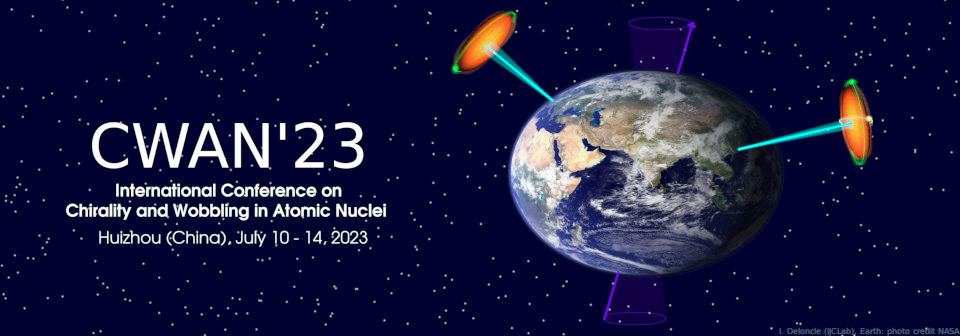Orateur
Description
It was recently proposed that odd-mass triaxial nuclei can exhibit wobbling motion at low spins. Exited bands identified as wobbling were reported in several nuclei, including in the two gold isotopes of $^{183,187}$Au. The Au isotopes are good candidates for studying such phenomena as the nuclei in this mass region are strongly affected by the triaxial degree of freedom. An excited band with $\pi$h$_{9/2}$ nature in $^{183}$Au was associated with transverse wobbling, where the odd proton is oriented along the short nuclear axis. In contrast in $^{187}$Au an excited band with $\pi$h$_{9/2}$ nature was associated with longitudinal wobbling where the proton is oriented along the intermediate axis. The proposed different alignment of the angular momentum of the valence proton in these two Au isotopes is quite interesting, as the proton Fermi level is expected to be similar. The most important experimental evidence supporting the proposed wobbling nature of the excited bands in these two Au isotopes was the large magnitude of the measured mixing ratios of transitions linking the excited and the yrast $\pi$h$_{9/2}$ bands. Recently, the mixing ratios for these linking transitions in $^{187}$Au were measured again. The new results suggested that the M1 component was dominant, thus ruling out the previously proposed wobbling nature. These contrasting results highlight the difficulty of such measurements and suggest that more investigations are needed, including in particular the Au isotopes.
In the present work excited low-spin states of $^{193}$Au were studied using the tape station set-up at iThemba LABS. These states were populated in the $\beta$-decay that followed the $^{197}$Au(p,5n)$^{193}$Hg reaction at E$_p$=50 MeV. The emitted γ rays were detected with three Compton-suppressed clover detectors and one Compton-suppressed segmented clover. In addition a Si(Li) detector was used for the emitted internal conversion elections. More than 100 new transitions were placed in $^{193}$Au at low spins. Mixing ratios were measured for several transitions in $^{193}$Au through internal conversion analysis. Experimental results on the low-spin states in $^{193}$Au will be presented and discussed.

